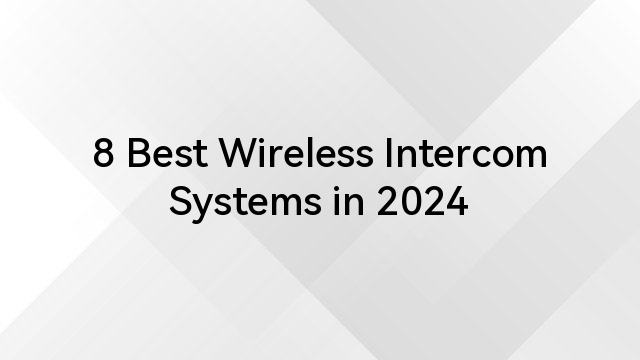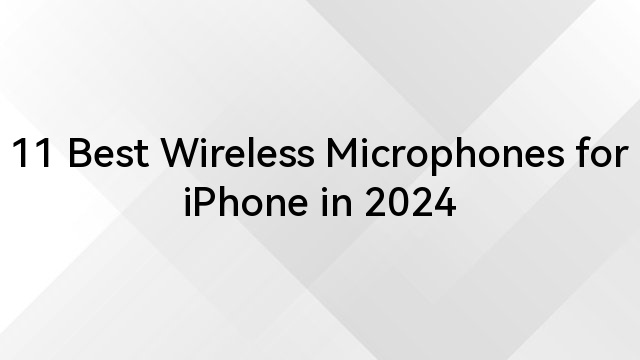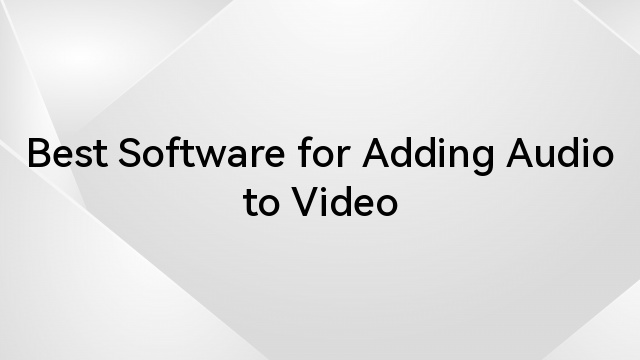Are you looking to elevate your DSLR recordings with crystal-clear audio quality? An external microphone is your ticket to capturing sound as precisely and vividly as your camera captures images. Whether you’re a budding filmmaker, an aspiring vlogger, or a professional videographer, the right microphone can make all the difference in your production value. From directional mics that hone in on your subject to omnidirectional mics that absorb the atmosphere around you, we’ll guide you through the best external microphones for your DSLR, ensuring you find the perfect audio companion for your visual storytelling.
When selecting the best external microphone for DSLR cameras, consider the following key criteria to find a model that will enhance your audio recording quality:
- Compatibility: Check that the microphone supports your DSLR camera model. It should easily connect with the camera’s microphone jack or other audio input.
- Sound Quality: High-quality audio capture is crucial. Look for a microphone with a good frequency response and low self-noise to ensure clear, crisp sound.
- Type of Microphone: Depending on your needs, you may choose a shotgun mic for directional recording, a lavalier for hands-free operation, or a stereo mic for ambient sound.
- Directionality: Choose a mic with the right polar pattern. Omni-directional mics pick up sound from all directions, while cardioid mics focus on sound from the front, minimizing background noise.
- Durability: A robust build is important, especially if you plan on shooting in various environments. Look for sturdy materials and reliable construction.
- Ease of Use: The microphone should be user-friendly, with simple controls and straightforward setup.
- Additional Features: Features such as shock mounts to reduce handling noise, and windshields for outdoor recording, can be highly beneficial.
- Portability: Consider the size and weight if you’ll be moving around or traveling with your gear.
- Battery Life: If the microphone requires batteries, check the life expectancy and whether it aligns with your recording demands.
- Price: Determine your budget and balance the cost with the features and quality you require.
Certainly!
Here’s a simplified comparison table:
| Feature | Rode VideoMic Pro+ | Shure VP83 LensHopper | Sennheiser MKE 600 | Audio-Technica AT875R | Deity V-Mic D3 Pro |
|---|---|---|---|---|---|
| Approx. Price* | $300 | $200 | $330 | $170 | $200 |
| Type | Shotgun | Shotgun | Shotgun | Line + Gradient Shotgun | Shotgun |
| Polar Pattern | Supercardioid | Supercardioid | Supercardioid | Line + Gradient | Supercardioid |
| Frequency Response | 20Hz to 20kHz | 50Hz to 20kHz | 40Hz to 20kHz | 90Hz to 20kHz | 50Hz to 20kHz |
| Sensitivity | -33.6dB re 1 Volt/Pascal | -36.5 dBV/Pa at 1 kHz | -21 dB re 1 V/Pa | -30 dB | -24dB at 1kHz |
| Power Requirements | In-built battery, USB | AA Battery | Phantom power or AA battery | Phantom power | In-built battery (USB-C) |
| Additional Features | – Auto power on/off | – Integrated Rycote Lyre shock mounting system | – Switchable low-cut filter | – Low-profile design | – Stepless gain knob |
| – High-pass filter | – Coated in a water-resistant material | – Low handling noise | – 60 hour battery life | ||
| – Safety channel | – Low noise circuit |
*Prices are rough estimates and subject to change. Always check current prices from multiple vendors.
Remember, this table simplifies some complex specifications, so if you’re seriously considering one of these products, it would be worthwhile to look at the full specifications and consider what’s most important for your specific situation. For example, if you’re often out in the elements, build quality and weather resistance might be key factors for you. If you’re looking to capture musical performances, then the frequency response and the clarity of the highs and lows would be paramount.
Rode VideoMic Pro+

The Rode VideoMic Pro+ is an on-camera shotgun microphone that aims to provide high-quality audio recording to videographers who require an upgrade from their DSLR’s built-in microphone. One of the standout features of the VideoMic Pro+ is its user-friendliness, striking a balance between advanced features and accessible functionality. Right out of the box, this microphone impresses with its solid build and thoughtful design, including a detachable 3.5mm cable, which is a small but significant touch for durability and ease of use.
Audio quality is where the VideoMic Pro+ truly shines. It offers a significant improvement over built-in microphones, delivering clear, focused sound with minimal background noise. The inclusion of a two-stage high pass filter helps to reduce low-frequency noises such as traffic or air conditioners, which can really clean up a recording in post-production.
The automatic power function is a godsend, ensuring the microphone is only on when your camera is, saving battery life and avoiding those dreaded moments when you forget to turn the mic on. Also, the digital switching capabilities enable you to tailor the audio output to your recording environment, which displays Rode’s attention to the needs of a versatile content creator.
Specs:
- Acoustic Principle: Line Gradient
- Frequency Range: 20Hz – 20kHz (selected HPF @ 75 Hz)
- Output Impedance: 200Ω
- Maximum SPL: 133dB
- Battery Life: Over 100 hours use with 2x AA batteries or LB-1 Rechargeable Battery
- Connectors: 3.5mm TRS output, USB
- Weight: 122g
Pros:
- High-quality audio with great clarity.
- Automatic power function seamlessly integrates with camera operations.
- Digital switching for various audio capture environments.
- Good battery life with versatile battery options.
Cons:
- More expensive compared to some entry-level models, which might be a factor for hobbyists.
- The form factor might be a bit bulky for very compact camera setups or vloggers who prefer minimalist rigs.
Price:
The Rode VideoMic Pro+ is in the mid-tier price range among external microphones for DSLRs. It’s an investment but one that is justified by the considerable jump in audio quality and functionality.
My Opinion:
As someone who has tangled with far too many low-quality audio recordings due to sub-par equipment, I found the Rode VideoMic Pro+ to be a beacon of reliability and performance. The sheer audio quality you get from this microphone can elevate your videos from amateur to professional levels.
Its ease of use cannot be overstated; you do not have to be an audio engineer to get the most out of this microphone. The automatic power function and the digital switching options are intuitive, making it much less intimidating for those who are not as technically inclined.
Yes, the price point may be a deterrent for some, but in my opinion, the upgrade in your audio quality is well worth the cost. In the world of content creation, audio is often a make-or-break element, and with the VideoMic Pro+, the chances of a ‘break’ are significantly reduced.
Shure VP83 LensHopper
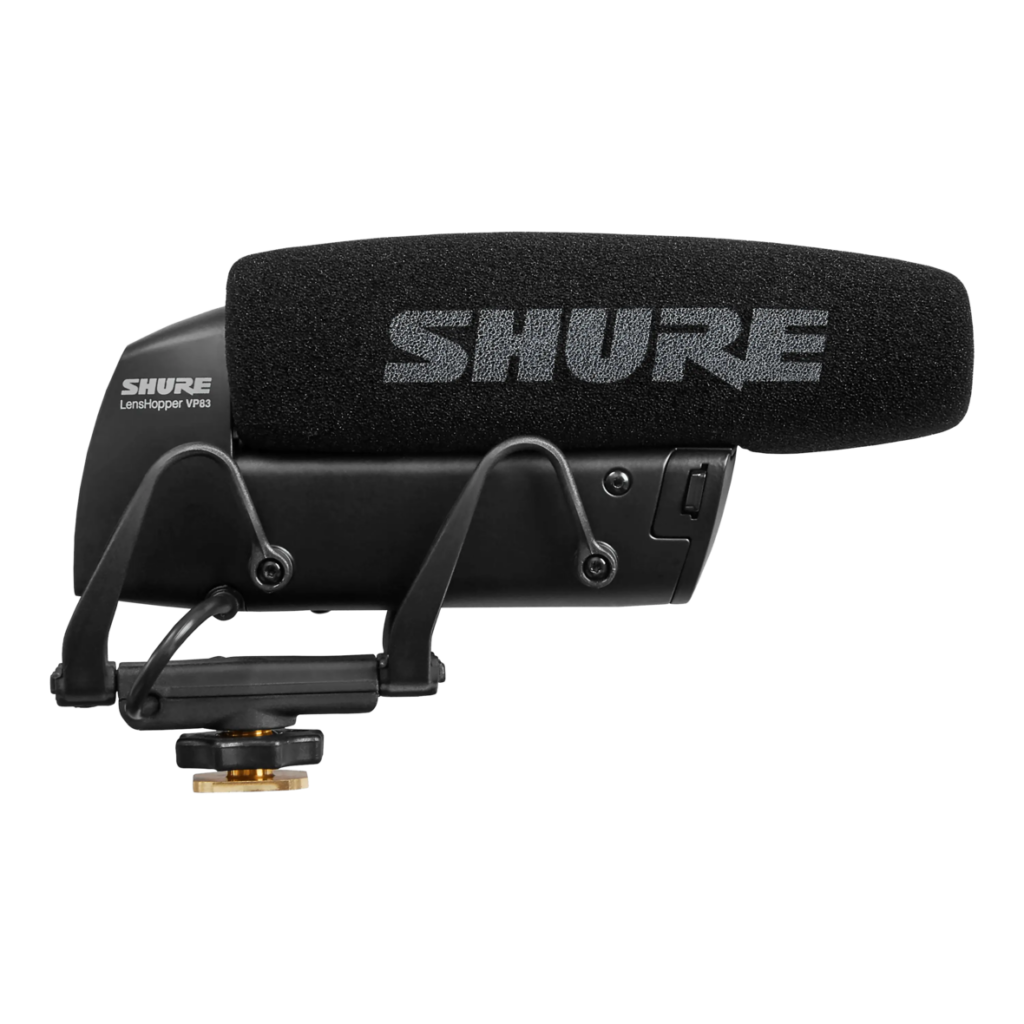
The Shure VP83 LensHopper is a compact, durably constructed shotgun microphone specifically designed for DSLR cameras and portable audio recorders. My hands-on experience with the Shure VP83 revealed that it captures high-fidelity sound and is incredibly user-friendly, slotting perfectly atop a camera. It features an integrated Rycote Lyre shock mounting system, which is excellent for reducing handling noise.
Using this mic out in the field impressed me with its ability to focus on the sound directly in front of the camera while attenuating noise from the sides. That directional capability makes it ideal for vloggers, documentary filmmakers, and run-and-gun shooters who need to pick up clear dialogue or focused sounds in noisy environments.
The simplicity of the VP83 is admirable – it doesn’t confuse with unnecessary switches or settings, which means you can plug it in and immediately start shooting without any fuss. It operates on AA batteries, which, in my opinion, adds to the convenience factor since you don’t need to worry about proprietary power sources.
Specs:
- Type: Condenser
- Polar Pattern: Supercardioid
- Frequency Response: 50Hz to 20kHz
- Sensitivity: -36.5 dBV/Pa
- Maximum SPL: 129 dB
- Power Requirements: AA Battery
- Connectivity: 3.5mm output
- Weight: 133 grams
Pros:
- The audio quality is truly exceptional for its size and price, offering clear, detailed sound with a natural tone.
- The shock mounting system is a huge plus, effectively reducing the physical noise that can ruin a perfect take.
- Very easy to use; it’s almost a point-and-shoot mic, making it great for both beginners and professionals who need a reliable, no-fuss setup.
- The build quality feels robust, like it can handle the rigors of fieldwork without falling apart.
Cons:
- The lack of features like gain control or a safety channel might deter some professionals looking for finer control over their audio input.
Price:
When I last checked, the Shure VP83 LensHopper hovered around the $200 mark. Given its performance and build quality, I find that to be a sensible price. It nestles in comfortably in the mid-range tier for external DSLR microphones, not pocket change by any measure, but you genuinely get what you pay for with this mic.
Sennheiser MKE 600 Shotgun Microphone

The Sennheiser MKE 600 is a solid choice for filmmakers and videographers looking to significantly upgrade their audio capture capabilities without venturing into the world of pro-audio gear that can be intimidating and costly. Not only does this microphone provide the clear, crisp sound that Sennheiser is known for, but it also boasts a versatility that makes it perfect for an array of shooting environments, from quiet indoor dialogues to noisy outdoor settings.
In my experience, the MKE 600 stands out with its directional pickup pattern which is adept at rejecting side noise, ensuring that your subject is isolated from unwanted ambient sounds. This focus on audio clarity is one of its biggest selling points. The robust build quality also inspires confidence; it feels like it can handle the rigors of on-location shooting without falling apart.
Specs
- Polar Pattern: Supercardioid/Lobar
- Frequency Response: 40 Hz to 20 kHz
- Low Cut Filter: Switchable
- Power: Phantom power or AA Battery
- Output: XLR-3
Pros:
- Exceptional sound quality with clear voice capture, perfect for interviews and dialogue
- Effective noise rejection capabilities that work wonders in noisy environments
- Durable and ready for field work or studio recording
- It’s pretty lightweight and user-friendly, making it an excellent option for run-and-gun videography
- Battery option is a lifesaver when phantom power isn’t available
Cons:
- Requires an additional XLR to 3.5mm cable or an adapter for use with most DSLRs, which could be a slight inconvenience
- The length might be a bit cumbersome for extremely tight shooting conditions
- Not the cheapest option for hobbyists or those on a tight budget
Price
The Sennheiser MKE 600 falls into the mid-range pricing category for shotgun microphones. It’s not inexpensive by any standard, but it’s a worthy investment for the serious videographer. Prices fluctuate, but it generally hovers around the $300 to $400 mark, depending on the retailer and availability.
In my opinion, the MKE 600 is ideally priced for what it offers. It certainly isn’t the most budget-friendly mic on this list, but given its performance, it’s easy to see where that extra money goes. If you’re serious about your audio and want to make a step up from the entry-level alternatives, the MKE 600 offers a fine balance between professional features and affordability.
Audio-Technica AT875R

The Audio-Technica AT875R is a compact shotgun microphone known for its clear audio capture, designed primarily for video production and broadcast audio acquisition. It is particularly notable for its practical form factor, making it suitable for mounting on video cameras as well as for use with boom poles.
My opinion of the AT875R is highly favorable. Right out of the box, its lightweight build was impressive, as this is crucial for reducing fatigue during extended shooting sessions. Upon use, it became clear that Audio-Technica had created a microphone that not only focuses on the subject it’s directed at but also rejects side noise very effectively. This is essential when filming in environments with a lot of background noise.
Specs:
- Element: Line + gradient
- Polar Pattern: Supercardioid
- Frequency Response: 90-20,000 Hz
- Low Frequency Roll-Off: 80 Hz, 12 dB/octave
- Open Circuit Sensitivity: –30 dB (31.6 mV) re 1V at 1 Pa
- Impedance: 100 ohms
- Maximum Input Sound Level: 127 dB SPL, 1 kHz at 1% T.H.D.
- Dynamic Range (typical): 107 dB, 1 kHz at Max SPL
- Signal to Noise Ratio: 74 dB, 1 kHz at 1 Pa
- Phantom Power Requirements: 11-52V DC, 2 mA typical
Pros:
- Its tight pickup pattern is excellent for isolating audio.
- The microphone’s short length makes it unobtrusive and perfect for use on-camera.
- It functions very well in outdoor conditions, partly due to its focused directivity.
- The sound quality is crisp and professional, making it fit for purpose.
- It’s relatively affordable for a high-quality directional microphone.
Cons:
- It requires phantom power, which may limit its compatibility with some DSLR cameras without the proper setup.
- The lack of included accessories such as a shock mount or windscreen may add to the overall cost.
- It does not possess an integrated battery option, which could be a drawback for on-the-go shooters.
Price:
The Audio-Technica AT875R falls in the mid-price range. Given its performance-to-cost ratio, I consider it a wise investment for anyone looking to improve their DSLR audio setup without breaking the bank. It bridges the gap between affordability and professional-grade quality.
To conclude, the AT875R by Audio-Technica offers commendable sound clarity and a directional pickup pattern that rivals more expensive shotgun mics. Its compact size makes it a versatile option for filmmakers and video content creators. While it may require additional accessories and a reliable phantom power source, these minor drawbacks are offset by its high-quality audio capture and reasonable price point. For DSLR users looking to significantly enhance their audio setup, the AT875R is certainly worth consideration.
Deity V-Mic D3 Pro
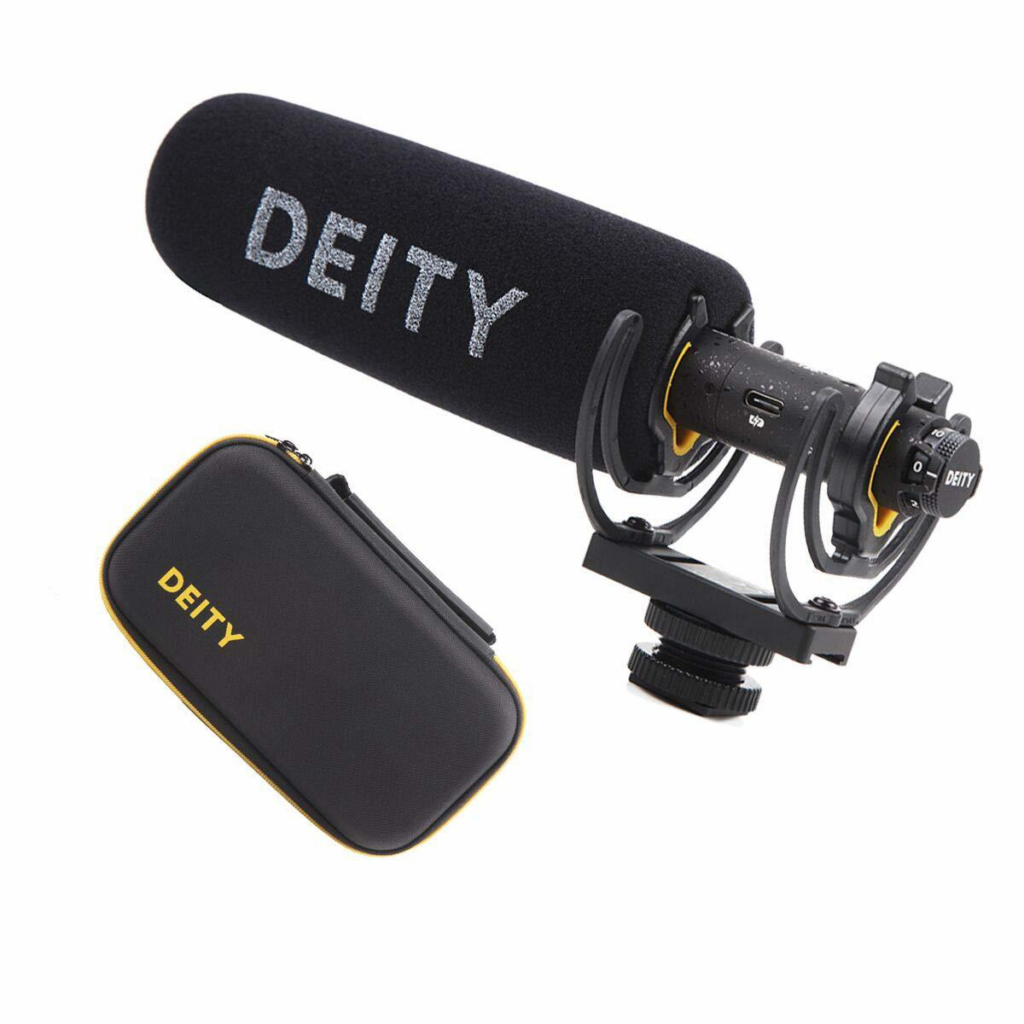
The Deity V-Mic D3 Pro is a standout external microphone for DSLR users looking to significantly up their audio game. Right off the bat, the D3 Pro impresses with its sleek design and sturdy build, hinting at its professional-grade capabilities. One of the most compelling features is its stepless gain control, which allows for precise adjustments to the recording level, a godsend for videographers who need to adapt quickly to changing environments.
In using the D3 Pro, the first thing you’ll notice is the remarkable clarity of sound it captures. Whether you’re recording a softly-spoken interviewee or the bustling sounds of a city, the audio remains crisp, with noise interference expertly minimized. The microphone’s super-cardioid polar pattern honed in on the sound source wonderfully while effectively sidelining unwanted peripheral noise.
Battery life is another area where the D3 Pro shines, lasting for hours on end, ensuring reliable performance during those prolonged shooting days. Furthermore, I appreciate the ability to charge the microphone via USB-C, which makes it easy to top off the battery using a power bank or even your laptop.
Moreover, it’s hard not to admire Deity’s attention to detail. The microphone’s Rycote shock mount does an outstanding job of reducing handling noise — a common gripe with less sophisticated models. Additionally, the auto on/off feature which syncs with your camera’s power status not only saves battery but is a convenient touch that streamlines the recording process.
Specs
- Polar Pattern: Super-Cardioid
- Frequency Response: 50Hz – 20kHz
- Signal to Noise Ratio: 84dB
- Battery Type: Rechargeable via USB-C
- Output Connector: 3.5mm TRRS
- Low-Cut Filter: 75Hz and 150Hz
- Gain Adjustment: Stepless control
- Dimensions: 200mm x 115mm x 50mm
- Weight: Approximately 198 grams
Pros:
- The stepless gain control is exceptionally smooth and precise.
- Superior build quality and professional aesthetics.
- Long battery life coupled with convenient USB-C charging.
- Auto on/off feature seamlessly integrates with the camera.
- Sound quality is top-notch, with clear, true-to-life audio reproduction.
Cons:
- The price point may be steep for amateur videographers on a tight budget.
- Slight learning curve with gain adjustments for those new to external microphones.
Price
Regarding price, the Deity V-Mic D3 Pro is positioned at the higher end of the market, often hovering around $200. While this may deter the hobbyist filmmaker, in my opinion, the investment is completely justifiable for the discerning professional or enthusiast who prioritizes audio quality and robust features.
Conclusion:
Selecting the ideal external microphone for your DSLR can dramatically enhance your audio recording quality, breathing new life into your videos. Whether you’re vlogging, capturing interviews, or recording a film, there’s a mic to suit your needs. From the directional prowess of shotgun mics to the versatility of lavaliers, the choice hinges on your specific requirements and budget. Make sure you pick a microphone that complements your camera, and remember that good sound can be just as important as great imagery in producing compelling content.
FAQs:
- Do I need a special adapter to connect an external microphone to my DSLR?
Not usually. Most external microphones designed for DSLRs connect directly via a 3.5mm audio jack. However, if your microphone uses XLR connectors, you’ll need an XLR-to-3.5mm adapter or an audio interface. - Can I use a wireless microphone with my DSLR?
Yes, you can. Wireless microphones provide more flexibility and reduce cable clutter. They include a transmitter that you attach to your subject and a receiver that mounts on your DSLR. - Is it worth investing in an external microphone if my DSLR has a built-in mic?
Absolutely. Built-in mics generally capture subpar audio quality and pick up unwanted camera handling noise. An external microphone significantly improves sound quality and gives you more control over audio capture. - What’s the difference between shotgun and lavalier microphones?
Shotgun microphones are directional and ideal for capturing sound from a specific direction, reducing ambient noise. Lavalier microphones are small, clip-on mics that are great for interviews and allow the subject to move freely.




